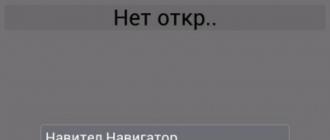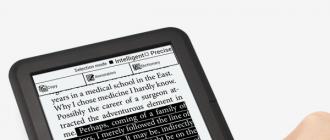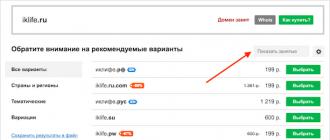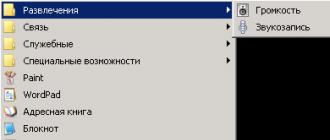A tutorial on how to create a switching login and registration form with HTML5 and CSS3.
In this tutorial we are going to create two HTML5 forms that will switch between login and registration using the CSS3 pseudo class :target . We will style it using CSS3 and an icon font. The idea behind this demo is to show the user the login form and provide a link to “switch” to the registration form.
Note that this is for demo purpose only, it will only work in browser supporting the:target pseudo class, and you should not use this code on a live website without providing solid fallback.
In the following, we will be going through Demo 1.
The HTML
In the HTML, we will put both forms, hiding the second one with CSS. Here is the code, I’ll explain some of the interesting parts later.
We’ve added some HTML5 goodness here and used some of the new inputs. The input type=password
automatically hides what the user is typing and replaces it with dots (depending on browser). The input type=email
enables the browser to check if what the user entered has the format of a valid email address. We’ve also used the require=required
attribute; browsers that support this attribute will not let the user submit the form until this field is filled, no JavaScript required.
The autocomplete=on
attribute will prefill values based on earlier user input. We also used some nice placeholders for the inputs that will show some guiding value when the input is not filled.
Now the two tricky parts. You might have noticed the two links at the top of the form. This is a little trick that will make our form behave nicely when playing with anchors, so that it won’t “jump” on long pages when we click on the switching link and trigger the:target pseudo-class.
The second little trick is related to the use of the icon font. We will be using a data-attribute to display the icons. By setting data-icon=”icon_character” with the according character in the HTML we will just need one CSS attribute selector to style all the icons. Read more about this technique on 24 Ways: Displaying Icons with Fonts and Data- Attributes .
The CSS
For the clearness of the code in this tutorial, I will omit all the vendor prefixes, but you will, of course, find them in the files. Once again, I’m using some pretty advanced CSS3 tricks that might not work in all browsers. Let’s get started.
Styling both forms using CSS3
First, let’s give our two forms some general styling for the container.
#subscribe, #login{ position: absolute; top: 0px; width: 88%; padding: 18px 6% 60px 6%; margin: 0 0 35px 0; background: rgb(247, 247, 247); border: 1px solid rgba(147, 184, 189,0.8); box-shadow: 0pt 2px 5px rgba(105, 108, 109, 0.7), 0px 0px 8px 5px rgba(208, 223, 226, 0.4) inset; border-radius: 5px; } #login{ z-index: 22; }
We’ve added a nice box shadow that’s made of two shadows: an inset one to create the inner blue glow, and an outside shadow. We’ll explain the z-index in a bit.
In the following we will style the header with some background clipping:
/**** general text styling ****/ #wrapper h1{ font-size: 48px; color: rgb(6, 106, 117); padding: 2px 0 10px 0; font-family: "FranchiseRegular","Arial Narrow",Arial,sans-serif; font-weight: bold; text-align: center; padding-bottom: 30px; } /** For the moment only webkit supports the background-clip:text; */ #wrapper h1{ background: -webkit-repeating-linear-gradient(-45deg, rgb(18, 83, 93) , rgb(18, 83, 93) 20px, rgb(64, 111, 118) 20px, rgb(64, 111, 118) 40px, rgb(18, 83, 93) 40px); -webkit-text-fill-color: transparent; -webkit-background-clip: text; } #wrapper h1:after{ content:" "; display:block; width:100%; height:2px; margin-top:10px; background: linear-gradient(left, rgba(147,184,189,0) 0%, rgba(147,184,189,0.8) 20%, rgba(147,184,189,1) 53%, rgba(147,184,189,0.8) 79%, rgba(147,184,189,0) 100%); }
Note that at this moment only webkit browsers support background-clip: text , so we will create a stripped background only for webkit here, and clip it to the text to add the stripes to the H1 title. Since the background-clip: text property currently only works in Webkit browsers, I decided to go only with the webkit prefix. That’s the reason why I split the CSS declaration into two parts, and use a webkit prefixed gradient only. Only using the –webkit- prefix is bad practice, it’s only for demo purpose, and you should never do this on real a website! That’s also where the -webkit-text-fill-color: transparent comes in handy: it enables us to only have a transparent background on the webkit browsers, all the other ones will ignore it and give us the provided text color fallback.
We also created a fading line under the title with the help of the:after pseudo-class. We use a 2px height gradient and fade the background to 0 opacity at both ends.
Now let’s style our inputs and give them a nicer look.
/**** advanced input styling ****/ /* placeholder */ ::-webkit-input-placeholder { color: rgb(190, 188, 188); font-style: italic; } input:-moz-placeholder, textarea:-moz-placeholder{ color: rgb(190, 188, 188); font-style: italic; } input { outline: none; }
First we style the inputs, and remove the outline. But be careful here; the outline helps the user know which input is focused, so if you remove it, you should provide some:active and:focus states for the inputs.
/* all the input except submit and checkbox */ #wrapper input:not(){ width: 92%; margin-top: 4px; padding: 10px 5px 10px 32px; border: 1px solid rgb(178, 178, 178); box-sizing: content-box; border-radius: 3px; box-shadow: 0px 1px 4px 0px rgba(168, 168, 168, 0.6) inset; transition: all 0.2s linear; } #wrapper input:not():active, #wrapper input:not():focus{ border: 1px solid rgba(91, 90, 90, 0.7); background: rgba(238, 236, 240, 0.2); box-shadow: 0px 1px 4px 0px rgba(168, 168, 168, 0.9) inset; }
Here we used the:not pseudo class, to style all inputs, except the checkbox. I provided a:focus and:active state, since I decided to remove the outline.
And now the fun part: the icon font. Since we can’t use:before and:after pseudo classes on inputs, we’ll have to cheat a little bit: we’ll add the icon to the label, and then place it in the input. I’m using the fontomas library which puts together some nice icons. You can rearrange them to set the icon to a specific letter. Remember the data-icon attribute? It’s where you should put the letter. I used data-icon=’u’ for user, ‘e’ for email, ‘p’ for password. Once I chose the letters, I downloaded the font, and used the fontsquirrel font generator to transform it into a @font-face compatible format.
@font-face { font-family: "FontomasCustomRegular"; src: url("fonts/fontomas-webfont.eot"); src: url("fonts/fontomas-webfont.eot?#iefix") format("embedded-opentype"), url("fonts/fontomas-webfont.woff") format("woff"), url("fonts/fontomas-webfont.ttf") format("truetype"), url("fonts/fontomas-webfont.svg#FontomasCustomRegular") format("svg"); font-weight: normal; font-style: normal; } /** the magic icon trick ! **/ :after { content: attr(data-icon); font-family: "FontomasCustomRegular"; color: rgb(106, 159, 171); position: absolute; left: 10px; top: 35px; width: 30px; }
Yeah, that’s it folks, you don’t need to have a class for each icon. We used content: attr(data-icon) to retrieve the letter from the data-icon attribute, so we only have to declare the font, choose a nice color and position it.
Now let’s style the submit button for both forms.
/*styling both submit buttons */ #wrapper p.button input{ width: 30%; cursor: pointer; background: rgb(61, 157, 179); padding: 8px 5px; font-family: "BebasNeueRegular","Arial Narrow",Arial,sans-serif; color: #fff; font-size: 24px; border: 1px solid rgb(28, 108, 122); margin-bottom: 10px; text-shadow: 0 1px 1px rgba(0, 0, 0, 0.5); border-radius: 3px; box-shadow: 0px 1px 6px 4px rgba(0, 0, 0, 0.07) inset, 0px 0px 0px 3px rgb(254, 254, 254), 0px 5px 3px 3px rgb(210, 210, 210); transition: all 0.2s linear; } #wrapper p.button input:hover{ background: rgb(74, 179, 198); } #wrapper p.button input:active, #wrapper p.button input:focus{ background: rgb(40, 137, 154); position: relative; top: 1px; border: 1px solid rgb(12, 76, 87); box-shadow: 0px 1px 6px 4px rgba(0, 0, 0, 0.2) inset; } p.login.button, p.signin.button{ text-align: right; margin: 5px 0; }
The trick here is to use the box-shadow in order to create some extra borders. You can only use one border, but as many box-shadows as you want. We will use the length value to create a “fake” second white border, 3px wide, with no blur.
Then we’ll style the checkbox, nothing very special here:
/* styling the checkbox "keep me logged in"*/ .keeplogin{ margin-top: -5px; } .keeplogin input, .keeplogin label{ display: inline-block; font-size: 12px; font-style: italic; } .keeplogin input#loginkeeping{ margin-right: 5px; } .keeplogin label{ width: 80%; }
We will style the bottom of the form using repeating linear gradients to create a striped background.
P.change_link{ position: absolute; color: rgb(127, 124, 124); left: 0px; height: 20px; width: 440px; padding: 17px 30px 20px 30px; font-size: 16px ; text-align: right; border-top: 1px solid rgb(219, 229, 232); border-radius: 0 0 5px 5px; background: rgb(225, 234, 235); background: repeating-linear-gradient(-45deg, rgb(247, 247, 247) , rgb(247, 247, 247) 15px, rgb(225, 234, 235) 15px, rgb(225, 234, 235) 30px, rgb(247, 247, 247) 30px); } #wrapper p.change_link a { display: inline-block; font-weight: bold; background: rgb(247, 248, 241); padding: 2px 6px; color: rgb(29, 162, 193); margin-left: 10px; text-decoration: none; border-radius: 4px; border: 1px solid rgb(203, 213, 214); transition: all 0.4s linear; } #wrapper p.change_link a:hover { color: rgb(57, 191, 215); background: rgb(247, 247, 247); border: 1px solid rgb(74, 179, 198); } #wrapper p.change_link a:active{ position: relative; top: 1px; }
Now you’ll notice that we’ve got two nice forms, but we really want only one to show at a time. So now is time for some animations!!
Creating the switching animation
The first thing to do is to hide the second form by setting the opacity to 0:
#register{ z-index: 21; opacity: 0; }
Remember that our login form had a z-index of 22? We will give the second form a z-index of 21, to put it “under” the login form.
And now the really good part: switching the forms using the:target pseudo class. What you really have to understand about:target, is that we will use anchors to make the transition. The normal behavior of an anchor link, is to jump to the target in the page. But we don’t want to jump anywhere, we only want to switch the forms. And here comes our trick using the two links at the top of the page. Instead of directly linking to the second form, and risking getting a “jumping” effect, we actually put the two links at the top of the page and give them display: none . This will avoid any page jump. Credit where credit’s due: I found this trick on CSS3 create (in French).
#toregister:target ~ #wrapper #register, #tologin:target ~ #wrapper #login{ z-index: 22; animation-name: fadeInLeft; animation-delay: .1s; }
So this is what happens: when we click on the Join us
button, we trigger the #toregister. We then do the animation, by using the sibling selector ~ to find our #register element. We use an animation called fadeInLeft
. Since we “hide” the form using zero opacity, we will use an animation that fades in, to make it appear. We’ve also changed the z-index, to make it appear on top of the other form.
The same happens for the other form.
And here is the code for the animation. We are using the CSS3 animation framework from Dan Eden and adapted it for this tutorial.
Animate{ animation-duration: 0.5s; animation-timing-function: ease; animation-fill-mode: both; } @keyframes fadeInLeft { 0% { opacity: 0; transform: translateX(-20px); } 100% { opacity: 1; transform: translateX(0); } }
The form that is “disappearing” will have another animation which will make it fade out to the left:
#toregister:target ~ #wrapper #login, #tologin:target ~ #wrapper #register{ animation-name: fadeOutLeftBig; } @keyframes fadeOutLeft { 0% { opacity: 1; transform: translateX(0); } 100% { opacity: 0; transform: translateX(-20px); } }
You can now use other animations from Dan Eden’s animate.css: just adjust your .animate class and replace the animation names. You will also find some custom animations at the end of the animate-custom.css file.
Well, that’s it folks. I hope you enjoyed the tutorial!
Please note, that in some browsers background-clip: text is not supported. In Internet Explorer 9 the transitions and animations don’t work, so there will be no fancy form switching. In Internet Explorer 8 and below the:target pseudo-class is not supported, so it won’t work at all (you’ll just see the login form).
DesignMaz have collected list of the best CSS /HTML Login Form Templates for Web Designers, Developers that they can download and use to create a form and most of them also have pre built HTML validation features as well as some option jQuery validation (like the Login /Register form with pass meter below).
Free Responsive Flat Login Form Widget Template
Free Responsive Flat New Login Form Widget Template for your websites. This Login form is designed using web technologies such as . It is completely free for download and can be use for your website or application sign in.
Forms Plus
PopForms
Flat Form with Bootstrap 3
This is a flat modern css3 design based on Booststrap 3 Framework. Responsive design with multi-color multipurpose web forms with pure css3.
Responsive Static Login Form HTML5 Template
Free Responsive Static Login Form HTML5 CSS3 Template. You can download this HTML CSS Sign In Widget which can be used in you web projects.
Free Responsive Flat and Clean Login Form Template
A Responsive Flat and Clean Login Form HTML Template designed using web technologies such as HTML5 and CSS3. You can free download and use for your website or application sign in.
Responsive Flat Purple Login Form Template
A free Responsive Flat Purple Login Form Template built with HTML5, and CSS3. It is completely free for download and can be used straight away in your website or app.
Bootstrap login with social buttons
Any Twitter Bootstrap developer will love these free Responsive Bootstrap login form template with social buttons . This Responsive Bootstrap login form template is a Simple and Clean login form website template base on Bootstrap 3.1.0 .
Easy to use the beautiful and colorful css login form for their own website. Simply insert into the existing CSS file and enjoy the new CSS login form . Created with rounded corners and nice look. It degrades nicely on older browsers, e.g. IE7 and IE8.
MetroLogin is a Windows 8’s Login form simulator that gives you this ability to make a login page for your website’s users or a login Page for your admin panel with a nice metro design.
Twitter Inspired Login Form – Jquery
This is a drop down login form similar to the one found on twitter. It comes complete with JavaScript , CSS and HTML . Just like Twitters login in form it comes with enhancements like tooltips and a compact login form and a clicked state button. It uses CSS3 to reduce the need for images and it degrades nicely in non CSS browsers. It has great browser support and works in most modern browsers and even older ones like Internet explorer 6 and 7.
This is clean and pleasant designed login & register HTML user interface with error handling and social buttons.
Clean and usable login & register form is for every developer. It’s very fast pure CSS . Error handling states, social buttons and forgotten password state is in there.
Zi-Popup Login Forms – Pure CSS3
Clean and usable login & register form is for every developer. It’s very fast CSS form with jQuery validation. Error handling, social buttons and forgotten password handling is in there. Bring to live with a jQuery.
Minimalistic Login/Register Form + Live Validation
Minimalistic Designed Login , Register and Forgot Template Forms Pack. Packed with jQuery Live Validation, 7 color styles, 3 different form size options, title animation, custom checkbox, tooltip hints and jQuery Error Handling.
Summer Forms – Login And Registration Forms
Summer Forms are coupled login and registration forms having a set of impressing effects bundled with the bright modern design. The flexibility of these responsive forms Summer Forms may be become the first brick of your new web site or may be just a replacement of your old forms . Every year the people get more exacting. The forms are well thought out and may satisfy any user.
Not so long ago, in order to achieve such effects, we used JS. But, now, CSS3 has all the necessary tools for making pop-up windows too.
Moon Forms – Login & Registration CSS Forms
Moon Forms are coupled login and registration forms having a modern design. The flexibility of these responsive forms allows placing it into any area on your site (like a widget, like a popup window, like a standalone page).
Tab and form developed by using only CSS3 , no javascript used. It is simple , clean and browser compatible. Very Easy to implement on any kind of website.
Features a large collection of form styles that are used regularly in websites. You get Search Forms , Login Forms , Contact Forms and General Form styles. Further all these forms are available in Dark and Light coloured versions, so you get a total of 224 form styles! The login , contact and general forms also have focus and validation error styles defined in the css.
Form Framework that strikes a balance between simplicity and elegance.CSS3 Responsive Forms kit is simple, clean and fresh modern form pack develop using bootstrap .
Day/Night Login Page
Day / Night Login Forms – has the net and unique design. In the kit you get 2 folder with 6 forms. In two colors white and dark. As in the kit includes 4 style buttons. Thanks to the Day / Night Login Forms developers can save time and money on developing the design. And the designers can see an example of the correct organization of layers.
Is a set of beautiful form elements. It has large amount of customized items, different color schemes, responsive grid system and allows you to create forms of any complexity and for any needs: login , registration , contacts , review , order , comment , checkout , etc.
Nice, clean and easy to use CSS3 login panel which 3 included color schemes.
Golden Forms – Responsive CSS3 Form Framework
Golden Forms
is a simple and professional Form
Framework that strikes a balance between simplicity and elegance. The framework is built with pure CSS3
+ HTML5
(no images), features a clean consistent Form UI
, responsive
12 column grid, and can be used to build any kind of Web Forms
quickly whether simple or complex, without special CSS
and coding knowledge.
– has a clean design and a powerfull 3D Flip Effect which give user a unique exprince and a fast way to complete the process . In the kit you get 1 psd file with 3 forms styes.
Responsive HTML5 – jQuery Sign In – Registration Form
Responsive HTML5 Sign In / Registration form , with jQuery effects and CSS3 customization.
Login forms can be found in websites with forums, shops, WordPress and mostly everything on the internet requires login form somewhere to get access to something. The whole web is incomplete without login forms and registration, signups forms.
HTML forms will be first which most of us come across and with proper CSS which gives style to the HTML structure . In latest HTML versions i guess HTML seems to have opted for CSS3 as their default structure styling option. Anyways what you find here is the pre designed HTML, CSS forms built by front end developers and shared to the public for free to use.
Try to use all these free login form templates as most of them also have pre built HTML validation features as well as some opt jQuery or HTML validation (like the Login/Register form with pass meter below).
This list is not over yet, i am interested in finding new login form designs so i will keep updating these list with new login form templates when they show up in 2017. Stay tuned.
Red Login Form
A simple and effective login form for your website which requires basic input fields and no extra programming.

A flat login form design designed for your website which is already flat. Download and use this template for any purpose.

Require a quick signin for your clients ? No worries, this pretty looking login form will get you going without any hassles. Download the source code and check the demo as you can put a sample username and password in the fields and try to login. You will be taken to a profile page on the same which looks glorious with a logout button which shows the logging out animation.

With google material design getting popular over flat design we can see a deep and carefully shadowed login form and a register form in this css3 template.

Here you get another brilliant login form for your busienss website with a option to hide/show login fields. Well coded css/html/js design will give you better loading without tampering your current site speed.

Minimal Login Form with fluid animation
A smooth animation of login form which opens up the login section by clicking a picture or a button as you need.
Minimalistic Login Form with css
Here you will find a no-fancy login form ui which is placed on a full screen background. The download file will get you css and html for easy implementation of this login to your website.

Animated Login Form
The click animations displayed on text fields is brilliant which displays a small sliding animation of user and password icons. You can then login the form to watch a authenticating pre loader as well as a welcome back block. This download contains all the source files to implement a login form for your own website.

Elegant Login
This is a simple version of login form you can display on your website as this also has less impact on site speed with its minimal code.

Calm Login Screen
A clean login form with animated background giving a relaxing feel to the whole page. Download the whole template in zip format from codepen.

Login and Signup Form
Integrate this fluid login and signup form on to your website with ease. The zip file with this download will provide you with css, html and js templates. Social media signup is also available with password show/hide options for on screen easy password entry.

Login Form with Create Account
A login form which displays with a fadein effect is just amusing to watch. This effect can be seen only in few modern login forms. Use the click me to change the form to signup or create form.
Demo
| Download

A clean template with free html,css using minimal code and design for a website login page.
Download
A simple transparent form for login pages which is pure css and html.
Download
Unique Style for Login
A login form which is totally unique with a character of interest.
Download
Classic HTML Login Form
An example of old school login form with modern day styles with css3 only.
Download
Signin form
A form with a cool border line and minimal css code and this is worth a try.
Download
New CSS3 Login Form
A simple login form with only pure css3 as no jquery is used. For validation lite JavaScript is used in html form template.
Download
A minimal style login form with flat design can be download from the link below. HTML validation is available and set in this login template.
Download
Minimal Form Template for Login
A validation for email is in palce and this tempalte is pure css, html with no fancy jquery modules.
Download
Signup/Login Form
A single form to login to the website as well as a signup, register option which can be flipped with a click. Even though the signup area is missing some important fields this is nonetheless better form with all powerful features.
Download
This login form is hidden unles you click on login link. This is a very useful feature for modern day website which can avoid an extra page for login. Display login on any page you like with this powerful login form.
Download
It’s provided both as a PSD and as a fully-coded HTML/CSS version, so you can get started integrating it straight away.

Login Form (Coded)
A professional login form. The download includes the PSD file, and I also felt like coding it so I included the xHTML, Js and CSS files as well.
Download
Here is an example of Registration form using HTML. Here a programmer can display as many "Text Field" as he/she wants. The name in front of Text Field is called "Label". At the end of the registration form their is a "ADD" button behnd which any desired link can be used. Once clicked it will redirect to that particular destination.
Here is an example of Registration form using HTML. Here a programmer can display as many "Text Field" as he/she wants. The name in front of Text Field is called "Label". At the end of the registration form their is a "ADD" button behnd which any desired link can be used. Once clicked it will redirect to that particular destination.HTML Code for registration form
Here is an example of Registration form using HTML. Here a programmer can display as many "Text Field" as he/she wants. The name in front of Text Field is called "Label". At the end of the registration form their is a "ADD" button behnd which any desired link can be used. Once clicked it will redirect to that particular destination.
In this example we have shown 9 "Text Field". Size of the Text Box can also be changed as per the requirement.
registration.html
Registration form
Как вы уже знаете, веб-клиент имеет возможность передавать веб-серверу различную информацию при помощи GET и POST-запросов. HTML-формы - это основной инструмент для создания таких запросов. По сути, HTML-форма представляет собой поле или поля для ввода информации на веб-странице. Наглядным примером HTML-формы служит форма ввода логина и пароля для авторизации на сайте.
HTML-форма описывается с помощью парного тега form . Этот тег имеет два важнейших атрибута: method и action . В атрибуте method задается тип HTTP-запроса (get или post), в action - запрашиваемый документ, то есть путь к файлу, запрос которого будет осуществлен. Путь может быть как абсолютным (с указанием домена сайта), так и относительным. Например:
<form method = "get" action = "/login.php" > ... </ form >Существует несколько различных видов элементов для ввода данных, которые помещаются внутри формы. Элемент, с которого я хотел бы начать, называется submit :
<input type = "submit" value = "Войти" / >Элемент представляет собой кнопку, нажатие на которой приводит к выполнению HTTP-запроса. Атрибут value задает надпись на кнопке. Форма может содержать несколько элементов submit. Чтобы в запрашиваемом документе определить, по какой именно из кнопок было произведено нажатие, необходимо элементам submit установить атрибуты name . Например:
<form method = "get" action = "/control.php" > <input type = "submit" name = "submit" value = "Add" / > <input type = "submit" name = "submit" value = "Edit" / > </ form >При формировании запроса веб-браузер включит HTTP-параметр, характеризующий нажатый элемент submit. В качестве имени параметра будет взято значение атрибута name нажатой кнопки, в качестве значения - значение атрибута value. Таким образом, при нажатии кнопки Add будет сформирован запрос:
/control.php?submit=Add
а при нажатии кнопки Edit:
/control.php?submit=Edit
Следующий элемент представляет собой простейший элемент для ввода однострокового текста. Его HTML-код:
<input type = "text" name = "name" / >name - обязательный атрибут для участия в HTTP-запросе. Значение этого атрибута будет использовано в качестве имени HTTP-параметра. Этот атрибут имеется у всех типов элементов форм.
Элементу можно также задать атрибут value, указав в нем текст, который по-умолчанию будет введен в элементе. Например:
<input type = "text" name = "login" value = "Имя пользователя" / >Элемент password служит для ввода паролей. Внешне он такой же, но введенный текст отображается в виде звездочек или точек:
<input type = "password" / >Этого, в принципе, достаточно для создания простейшей формы авторизации. Давайте попробуем ее реализовать, а затем вернемся к рассмотрению остальных типов элементов.
Создадим файл auth.php в корневом каталоге со следующим содержимым:
<html xmlns= "http://www.w3.org/1999/xhtml" > <head > <title > Авторизация</ title > <meta http-equiv = "Content-Type" content = "text/html;charset=utf-8" / > </ head > <body > <form method = "get" action = "/auth.php" > <table > <tr > <td > Имя пользователя:</ td > <td > <input type = "text" name = "login" value = "" / > </ td > </ tr > <tr > <td > Пароль:</ td > <td > <input type = "password" name = "pass" value = "" / > </ td > </ tr > </ table > <input type = "submit" value = "Войти" / > </ form > </ body > </ html >Как видите, внутри тега form можно размещать теги, помогающие красиво разметить форму (я внутрь поместил таблицу). Форма содержит поля для ввода имени пользователя и пароля с именами login и pass соответственно. При нажатии "Войти" формируется GET-запрос документа /auth.php (то есть, страница запрашивает саму себя). В моем случае полный URL страницы имел вид http://test-domain3/auth.php .
Введите данные и нажмите "Войти". Страница должна перезагрузиться. Должен также измениться и адрес страницы. В моем случае он принял вид:
Http://test-domain3/auth.php?login=Joker-jar&pass=12345
Это означает, что документ auth.php был запрошен с GET-параметрами, которые были введены с помощью HTML-формы. Поместите в начало файла auth.php PHP-обработчик, который будет принимать данные для авторизации:
//--Проверяем, были ли переданы данные if ( isset ($_GET [ "login" ] ) && isset ($_GET [ "pass" ] ) ) { echo "Ваше имя пользователя: " . $_GET [ "login" ] . ", ваш пароль: " . $_GET [ "pass" ] ; exit ; } ?>Если странице были переданы логин и пароль, условие сработает и сообщение будет выведено. Также будет вызван exit , который прекратит дальнейшее выполнение скрипта, следовательно форма выведена не будет.
Передавать пароль с помощью GET-запроса небезопасно, так как он виден в адресной строке. Сменим тип запроса на POST. Для этого изменим значение атрибута method, а в PHP-обработчике обращения к массиву $_GET изменим на $_POST. Проверьте работоспособность скрипта.
Следующий элемент - флажок . Его применяют, когда от пользователя необходим ответ вида "да/нет":
<input type = "checkbox" / >Если флажок не отмечен, в параметрах ничего не передается. Иначе передается параметр name со значением on . Есть еще один момент. Как правило, рядом с флажком присутствует поясняющая надпись. Хорошим тоном является реализация веб-мастером реакции флажка на клики по этой надписи. Делается это просто. Флажку присваивается определенный id, а сама надпись оформляется тегом label с атрибутом for , значение которого равно идентификатору флажка:
<input type = "checkbox" id = "remember" name = "remember" / > <label for = "remember" > Запомнить меня</ label >Похожий элемент используется для выбора ответа из набора значений. Допустим, пользователю необходимо выбрать один из трех цветов:
<input type = "radio" id = "red" name = "color" value = "red" / > <label for = "red" > Красный</ label > <br / > <input type = "radio" id = "green" name = "color" value = "green" / > <label for = "green" > Зеленый</ label > <br / > <input type = "radio" id = "blue" name = "color" value = "blue" / > <label for = "blue" > Синий</ label > <br / >Обратите внимание, что у всех элементов одинаковое значение name. Можно выбрать только одно значение. В HTTP-параметра передастся value выбранного элемента, например color=blue .
Чтобы изначально был выбран какой-то из элементов, например, первый, ему нужно задать атрибут checked со значением checked (стандарт XHTML):
<input type = "radio" id = "red" name = "color" value = "red" checked = "checked" / >Для ввода большого многострочного текста существует специальный элемент textarea :
<textarea rows = "6" cols = "20" name = "text" > Текст внутри элемента</ textarea >Текст внутри элемента
Этот элемент, как видите, отличается от предыдущих. Он представляет собой парный тег, а текст помещается не в атрибут, а в тело тега. У элемента также есть атрибут name. При помощи атрибута rows можно задать количество строк в элементе, cols - количество символов в строке. Элемент textarea используется, как правило, в POST-формах, т.к. предполагает ввод длинного текста (например, форма сообщения на форуме).
Выпадающий список. Наверняка сталкивались с таким элементом в программах. Позволяет выбрать одно значение из набора. Код элемента также не совсем обычен. Сначала создается элемент-контейнер select , ему задается атрибут name:
<select name = "towns" > </ select >Внутрь контейнера помещаются элементы списка. Элемент списка представляет собой парный тег option , каждому элементу задается атрибут value. В тело элемента прописывается надпись элемента:
<select name = "town" > <option value = "msk" > Москва</ option > <option value = "vlad" > Владивосток</ option > <option value = "nsk" > Новосибирск</ option > </ select >В HTTP-запросе передается параметр с именем name и значением value выбранного элемента, например town=vlad . По умолчанию выбран первый элемент списка, если хотите, чтобы был выбран другой элемент, задайте ему атрибут selected со значением selected :
<option value = "vlad" selected = "selected" > Владивосток</ option >Список значений. Если элементу select задать атрибут size с числовым значением, выпадающий список превратится в список значений. При этом значение атрибута size будет определять вертикальный размер элемента:
<select name = "town" size = "3" > <option value = "msk" > Москва</ option > <option value = "vlad" > Владивосток</ option > <option value = "nsk" > Новосибирск</ option > </ select >Москва Владивосток Новосибирск
Если элементу select задать атрибут multiple со значением multiple (стандарт XHTML), то появится возможность выбирать более одного элемента одновременно (например, с зажатой клавишей Ctrl). В этом случае в HTTP-запросе будут переданы все выбранные элементы с одинаковыми именами, например: town=msk&town=vlad&town=nsk .
Иногда необходимо в HTTP-запросе передать параметр, который пользователь не должен редактировать, а порой даже и видеть. Допустим, вы реализуете форму редактирования новости. В HTTP-запросе необходимо передавать идентификатор этой новости. Для подобных случаев есть скрытый элемент HTML-форм:
<input type = "hidden" name = "param" value = "" / >Этот элемент не будет виден на форме, но при выполнении запроса будет передан HTTP-параметр name=value.
Иногда может пригодиться элемент, очищающий форму. Кнопка, при нажатии на которую все введенные пользователем данные на форме стираются:
<input type = "reset" value = "Очистить" / >Перечисленные элементы имеют два специальных атрибута:
readonly="readonly" - запрещает изменение информации в элементе (режим "только для чтения);
disabled="disabled" - делает элемент неактивным.
Существует также элемент для выбора файла, который при сабмите формы будет загружен на веб-сервер, но об этом, пожалуй, в отдельной статье.






